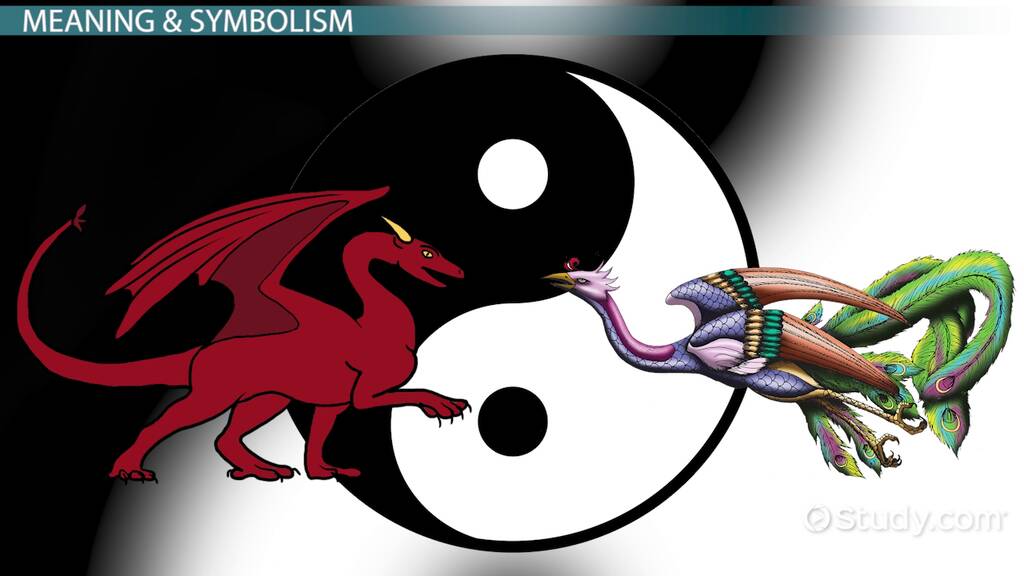Dragons and phoenixes are two of the most popular mythical creatures found in folklore, legends, and mythology across different cultures. Dragons are commonly depicted as reptilian creatures with scales, sharp claws, and long tails. In contrast, phoenixes are bird-like creatures with colorful feathers, often represented in red, gold, and orange hues. Dragons symbolize power, prosperity, and strength as well as protection, while phoenixes symbolize renewal, rebirth, and immortality. Both creatures have significant cultural significance in different cultures, particularly in China where the dragon is a symbol of the emperor and the imperial family, while the phoenix represents female power, beauty, and grace.
Dragons vs. Phoenixes: A Comparison of Mythical Creatures
Introduction
Mythical creatures have always fascinated and inspired people throughout history. Dragons and phoenixes are two of the most popular mythical creatures found in folklore, legends, and mythology across different cultures. While both creatures are revered for their mystical and powerful aura, they have different characteristics, symbolism, and cultural significance. This article will explore the similarities and differences between dragons and phoenixes.
The Origins of Dragons and Phoenixes
Dragons and phoenixes have different origins and mythologies associated with them. Dragons have been part of legends and myths from various cultures, including Chinese, European, and Middle Eastern. In Chinese mythology, dragons are considered to be divine creatures, bringers of rains and symbolizing good luck, power, and strength. In contrast, European dragons are depicted as fierce, fire-breathing monsters, often associated with destruction and chaos.
On the other hand, phoenixes have their origins in Greek, Egyptian, and Asian mythology. In Greek mythology, a phoenix is a bird that is cyclically reborn from its ashes, representing rebirth and renewal. In Egyptian mythology, the phoenix is a symbol of the sun and is associated with the death and rebirth of the sun each day. In Chinese mythology, the phoenix symbolizes harmony, prosperity, and female power.
Physical Characteristics
Dragons and phoenixes also differ in their physical appearance. Dragons are typically depicted as reptilian creatures with scales, sharp claws, and long tails. They are often portrayed with wings and the ability to breathe fire or ice. In contrast, phoenixes are bird-like creatures with colorful feathers, often represented in red, gold, and orange hues. They are also depicted as having a long tail and a crest on their heads.
Symbolism
Both dragons and phoenixes have strong symbolic meanings associated with them. Dragons are often associated with power, prosperity, and strength, with a tenacity that can push through any obstacle. They are also considered to be protectors of both people and places, and talismans with images of dragons are often used in Chinese culture, particularly during the New Year.
Phoenixes, on the other hand, symbolize renewal, rebirth, and immortality. They represent transformation and the ability to rise from the ashes, and they are often associated with the sun or fire. As a symbol of renewal, the phoenix becomes particularly relevant during times of change or transition, including death or new beginnings.
Cultural Significance
Dragons and phoenixes also hold significant cultural significance in different cultures. In China, the dragon has been a symbol of the emperor and the imperial family for centuries. The Chinese New Year is often marked by dragon dances and parades, with the dragon considered to bring good luck for the year ahead.
In contrast, the phoenix is typically associated with the Empress in China, representing female power, beauty, and grace. Throughout history, it has been used as a symbol of the feminine, and it is often depicted in Chinese art as an emblem of royalty and nobility.
Conclusion
In conclusion, dragons and phoenixes are powerful and mystical creatures that exist in folklore and mythology across different cultures. While they share some similarities, including their symbolism of power and transformation, they also have significant differences in terms of their physical characteristics and cultural significance. Understanding these differences will help us appreciate and learn from the diverse world of mythology and folklore.
